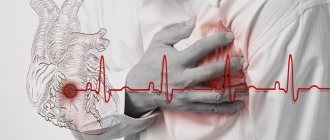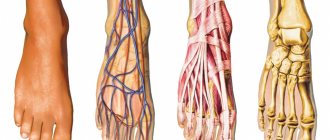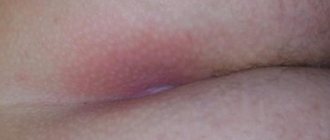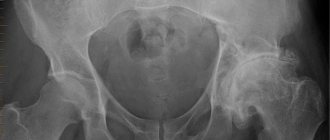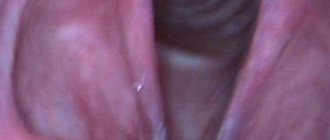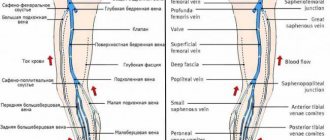The structure and functions of the head occupy one of the key positions in the study of medicine, and for good reason: the skull contains the main organs, thanks to which a person is able to perceive and understand the world around him, maintain most physiological functions and form consciousness. The brain plays the most important role here - it is the bones of the skull that are so intensely protected, trying to prevent the slightest injury, which can be fraught with serious consequences. The cavities of the skull contain the organs of hearing and vision, taste and smell, as well as blood vessels and nerves connecting the brain with the rest of the body. Articulating, the bones of the head form the upper respiratory tract and the initial section of the digestive tract (oral cavity), in which the preparatory stage is carried out - grinding and softening food.
The study of skull bones is not limited to anatomy - the structure of the head is also of interest to other scientists, including anthropologists and historians. Based on the slightest nuances of the skull, experts can determine gender, age and race, recreate the subtleties of the silhouette and predict the existing characteristics of the body. Let's look at what these or those nuances of the anatomy of the human head depend on, what role the bones of the skull play and how they perform the functions assigned to them.
The structure of the human skull: anatomy of bone, cartilage and muscle structures
It is generally accepted that the main role in the structure of the head is played by bone formations: they surround the brain tissue with a dense frame, act as protective cavities for the eye sockets, hearing organs, nasal cavity, serve as a place for muscle attachment and form openings for the passage of blood vessels and nerve fibers. Cartilaginous structures form the outer part of the nose and ears, and in infancy they also replace some parts of the bones, providing mobility and thereby preventing childhood injuries during childbirth.
The muscles of the head surround the skull with a relatively thin covering. Some facial features, features of facial expressions and the possibility of free movement of the lower jaw, due to which the chewing process is carried out, depend on their structure and degree of development. As a rule, muscle fibers are tightly attached to the bones and follow the shape of the skull throughout.
Sphenoid bone
The sphenoid bone is hidden inside the head and has a square shape. Bone processes grow on the sides of it. At the back, it passes into the occipital, thanks to cartilaginous tissue, which ossifies over time and turns into a single bone. In front of the central part of the sphenoid bone there is a small notch designed to accommodate the pituitary gland.
Anterior to the opening for the pituitary gland, on each side there are two more tiny openings for passing nerves and the ophthalmic artery. On the reverse side, the sphenoid bone faces the nasal region, which is the hidden nasal wall.
On both sides of the center there are holes connecting the nose to the central system. On the same side of the sphenoid bone, both sides of the processes are the posterior walls of the orbits. These processes have a certain number of holes that serve as passages for the nerves and vessels of the central nervous system. From below, the processes are attached to the sky.
Functions of the skull
The special structure allows the skull to cope with the functions assigned to it, among which the main ones are occupied by:
- protection of brain tissue from injury due to intense external influences;
- formation of physiognomic features of facial expression and facial expressions;
- thorough grinding and softening of food before it enters the digestive tract;
- speech function.
Human skull bones: anatomy
The following functional areas are distinguished in the human skull:
- the internal base on which the posterior, anterior and middle cranial fossae are located;
- outer base;
- temporal and infratemporal fossa;
- nasal cavity;
- eye sockets;
- solid sky;
- pterygopalatine fossa.
All these formations are formed due to various bone structures and their dense joints. In the anatomy of the human skull, there are 23 separate bones, of which 7 are unpaired and 16 are paired (8 pairs, respectively). In addition, the skull contains 3 pairs of auditory bone formations - the hammer, incus and stapes in the right and left cavities of the middle ear. The bones of the skull sometimes also include the dentition located on the upper and lower jaw. The number of teeth may vary depending on age and dental history.
Brain department
The cerebral part of the skull is the container and main protection of the brain. This area includes:
- arch formed by flat bones;
- external and internal base, consisting of mixed bones, some of which are classified as pneumatic (i.e., containing air sinuses).
The arch and base are formed due to the tight, motionless articulation of 8 bone formations - 4 paired and 4 unpaired:
- The right and left parietal bones form the lateral walls of the skull. They connect along the midsagittal line and are adjacent to the frontal bone, forming the coronal suture;
- The right and left temporal bones are located slightly below the parietal bones. On their surface there are 3 processes - zygomatic, styloid and mastoid. The zygomatic process looks like a thin bridge and connects to the zygomatic bone just above the lower jaw. The styloid protrusion serves as the attachment site for most of the muscle fibers of the neck. And the mastoid process is located directly behind the auricle;
- The frontal bone is easily palpable from the front side. It forms the surface of the forehead, the brow arches and the upper part of the eye sockets;
- The sphenoid bone represents the lower part of the eye sockets and the lateral surface of the skull. Shaped like a butterfly, this bone spans the width of the skull and supports the base of the cranial cavity;
- The ethmoid bone is located slightly below the frontal bone and forms the bony part of the nasal concha and septum;
- The occipital bone is the final part of the skull. It is located below the other bones and adjoins the first cervical vertebra at the occipital condyles at the foramen magnum through which the spinal cord passes.
Facial department
The facial skeleton is formed by paired and unpaired mixed bones. They serve as the basis of the masticatory apparatus and support for most of the facial muscles responsible for the formation of individual facial features. Each of the facial bones performs a specific function:
- Two nasal bones make up the bridge of the nose and partially provide patency of the nasal passages;
- The inferior turbinates look like thin curved plates. They separate the lower and middle nasal passages and form the lacrimal, maxillary and ethmoidal processes;
- The right and left cheekbones replace the lateral walls of the eye sockets;
- Small lacrimal ossicles are located in front of the medial part of the eye orbits. They act as the junction of the eye sockets with the nasal sinuses;
- The two maxillary bones, connecting along the midline, form the upper jaw, which holds the dentition and participates in the act of chewing;
- The palatine bones are located in the posterior region of the nasal passages, they form part of the hard palate;
- The lower jaw is one of the most powerful bones of the facial part of the skull. It is adjacent to the right and left temporal bones on both sides of the face, forming a movable joint, thanks to which the active part of chewing is carried out. In addition, the lower jaw serves as a support for the dentition and forms the visible oval of the face (cheekbones, chin, partially cheeks);
- The vomer is the main part of the nasal septum. It has a flat trapezoidal shape and occupies a central place in the nasal cavity, dividing it into two passages - right and left;
- The hyoid bone has the shape of a small horseshoe and lies under the tongue. It is one of the few bones that are not connected to others, located directly in the thickness of the muscle fibers.
Occipital bone
The structure of the human skull (a photo with a description will help you navigate the anatomical location of the bones) includes one of the largest bones - the occipital bone. It is a flat, round, regular bone with a wide opening for the spinal column. It is convex on the outside and concave on the inside.
This is an unpaired bone and includes 4 sections surrounding this hole:
- basilar part - in front of the opening for the spinal column (if you look at the skull “face”);
- two lateral parts located on either side of the pillar;
- the occipital scales are located behind the column.
The basilar part has 4 corners and in front passes into the wedge-shaped section, attached to the bone with the help of a cartilaginous growth. And the lateral parts merge with the temporal ones, also connecting with cartilaginous tissue. They are located along the spinal column on the reverse side, flowing in front into the basilar part, and behind into the occipital scales. As it moves from the edge of the back of the head to the center of the skull, it becomes thinner.
Structure of the skull: anatomy of bone joints and joints
The vast majority of the skull bones are connected using fixed sutures. Facial bone formations adjacent to each other form flat joints, invisible under the thin cover of the muscle tissue. And the temporal bone, connecting with the parietal, gives rise to the scaly suture.
There are only 3 serrated sutures in the anatomy of the skull:
- coronary, formed by the parietal and frontal bones;
- sagittal, located between the two parietal bones;
- lambdoid, located between the occipital and parietal bones.
The only movable joint of the skull is the mandibular joint. The lower jaw can perform movements in different planes: rise and fall, move to the right/left and forward/backward. Thanks to this mobility, a person can not only chew food thoroughly, but also maintain articulate speech.
Age characteristics
With age, the shape and structure of the skull changes. Thus, in newborn babies, the facial region is almost 8 times smaller than the brain, so the head may look disproportionate and large. The baby's jaws are usually underdeveloped and have no teeth, because he does not yet have the need to chew solid food.
The bones of the skull of infants do not articulate tightly, due to which the head can slightly change shape and shrink as it passes through the birth canal. This feature protects newborns from birth injuries and helps maintain normal intracranial pressure. At the interosseous sutures they have noticeable membranous areas - fontanelles. The largest, the anterior fontanelle, occupies a central position at the junction of the sagittal and coronal sutures. It usually heals by the age of two. Other fontanelles are less voluminous: the occipital, two sphenoid and mastoid membranes are not palpable by 2–3 months.
Anatomy of the skull
changes not only in infancy - formation usually takes place in 3 stages:
- Predominant growth in height, strengthening of bones and hardening of sutures - from birth to 7 years;
- The period of relative rest is from 7 to 14 years;
- The growth of the facial part of the skull is from 14 to 20–25 years, depending on puberty.
A short excursion into the anatomy of the skull allows us to clearly see that the head is an extremely complex structure, the condition of which directly affects the health of the brain, and therefore most vital functions. With the slightest injury, most of the damage is taken by the bones, but their strength is not unlimited - with a strong impact, fractures and bruises are possible, the consequences of which can be irreversible. Therefore, under any circumstances, the skull should be properly protected and protected from injury and other damage.
Frontal bone
The second largest cranial zone is round in shape, starting at the crown of the head and ending in the middle of the eye sockets, encompassing part of the set of bones that form the nose. This is a solid bone on both sides, having on the outer side the brow ridges, glabella and frontal tubercles. The frontal bone includes the supratemporal arches, and the interval involving the temporal lobe.
On the inside, the bone is strewn with grooves from adjacent veins; its central part is cut through by a depression from the sagittal sinus. In the area of the glabella there are openings that provide access to the frontal sinus; between them is the nasal bone. The frontal lobe is continuous, unpaired, passing into the parietal lobe through the coronal suture. On the sides it merges with the sphenoid and zygomatic bones.
Nasal bone
The structure of the human skull (in the photo with the description you can see a more detailed structure) includes a set of large and small bones that perform one function, in this case respiratory. The nasal bone is a miniature plate that complements the bony formation of the nose, along with the lacrimal plate.
It grows from the frontal and passes into the upper jaw. The bone has its own pair and is shaped like a bent rectangular plate. Its parts meet in the middle thanks to the internasal seam. The upper tip is slightly upturned at the transition to the frontal area.
On the surface of the nasal bone on the reverse side there is a depression from the ethmoidal nerve. The lower part is connected to the upper jaw by cartilages that form the nose of a living person.
Lower jaw
An unpaired, irregularly structured bone, including the chin and the alveolar part - the lower row of teeth. The heads of the lower jaw are attached to the temporal bone. Its shape has 3 parts: a body and 2 branches. The frontal region has two through passages on the sides, under the fangs, for the passage of tendons responsible for the work of the lower jaw.
The branch, at its apex, flows into two other elevations - the condylar tip and the coronoid, connected by an arched notch concave inside the branch. On the reverse side of the jaw there are grooves from the mylohyoid joints and a passage leading into the jaw.
Parietal bone
This part has its own pair and is located in the area of the cranial vault. A sagittal suture passes through both of its parts. It is connected to the occipital part by a lambdoid suture, and to the frontal part by a coronoid suture. The temporal bones extend from the sides of the parietal bone. The structure of the parietal bone is solid, with a convex part on the outside and a concave part on the inside.
It includes 4 sides:
- sagittal;
- occipital;
- scaly;
- frontal
Inside, it is covered with grooves from cerebral convolutions and blood vessels. From the sagittal part, in the center, there is a parietal foramen. On the outer side there are two temporal stripes.
Cheekbone
A pair of small bones involved in the formation of the eye socket, which takes on the function of supporting the eye and distributing pressure during chewing of food. The zygomatic bone is the largest part of the cheek, due to its arched outer protrusion.
Its upper process passes into the forehead, the lateral and lower into the upper jaw. Posteriorly it meets the zygomatic process of the temporal formation. There is a through passage above the zygomatic tubercle, through which the zygomatic nerve extends.
The bone has 3 surfaces:
- lateral;
- temporal;
- orbital.
Hyoid bone
A small solid bone located under the tongue, leading to the speech apparatus system and the work of the lower jaw. This is an independent part, not fused with the rest of the bones, attached to the tissues through joints and muscles. It is located under the lower jaw at the beginning of the laryngeal column, its front part is located on the same axis with the end of the molars.
Its shape resembles a horseshoe. The bone structure consists of a main plate with long and small horns on the right and left. The main part is connected to the upper horns by cartilage tissue, the small ones grow from the body of the bone itself. Large horns are attached to the laryngeal cartilage.
The movements of the hyoid bone are caused by the work of the lingual muscles, which force it to change position during speech and chewing food.
The system of development of the skull, as we know it at this stage of evolution, has provided a person with the opportunity to carry with him important elements involved in communication, data storage, analysis and other processes that fit into just one part of the body - the head.
The human skull has a unique structure, unlike the structure of the skull of other mammals - only in intelligent creatures the brain section is located above the facial part.
The Institute of Human Anatomy devoted an entire section to the study of the structure of the skull, which was called craniology, widely used in anthropology. The photo with description shows the evolution of the human skull to the present time.
Article design: Mila Friedan
Temporal bone
The human skull includes in its structure a paired bone called the temporal bone (as indicated in the photo with the description). On the sides of the skull, the zygomatic process protrudes from the temporal bones, which is a landmark when examining one of the pieces of the temporal bone.
A process called a “pyramid” protrudes inside the structure. This shape is visually similar to a sea shell. Its surface includes two through passages for the petrosal nerves.
At the top of the “pyramid” there is a cavity of the auditory canal, which opens into the carotid canal in the lower bony part, located at the foot of the zygomatic process. The facial nerve also cuts the bone there, also emerging from the lower part of the temporal structure.
On the outer part, under the process, there is the tympanic part, which belongs to the ear zone and a dimple for attaching the lower jaw. At the bottom of the temporal part there are grooves for the glossopharyngeal and vagus nerves. There is also a wide exit for the carotid artery. The bone is located on the periphery of three Bones - parietal, sphenoid and occipital.
Outside surface
What does the base of the skull look like from the outside? Firstly, its anterior section (in which a bony palate is distinguished, bounded by teeth and alveolar maxillary processes) is hidden by the bones of the face. Secondly, the posterior part of the base is formed by the temporal, occipital and sphenoid bones. It contains various openings intended for the passage of blood vessels and nerves. The central part of the base is occupied by the foramen magnum, on the sides of which the condyles of the same name protrude. They are connected to the cervical spine. On the outer surface of the base there are also the styloid and mastoid processes, the pterygoid process of the sphenoid bone and numerous foramina (jugular, stylomastoid) and canals.
Upper jaw
Paired facial bone on the nose. Its seam begins between the two front teeth and ends at the bridge of the nose. The solid formation is related to the air-bearing ones. Thanks to the nasal sinuses present in it, it takes part in breathing. The lower part includes the upper row of teeth and the roof of the mouth.
The composition contains 4 surfaces:
- front;
- infratemporal
- nasal;
- orbital.
Under the orbits, on both sides of the maxillary process, there are through passages pierced by the trigeminal nerves. Education is included in the formation of the eye sockets, occupying most of it.
It also occupies a significant area of the hard palate, where it passes into the sphenoid bone. Between the sphenoid and maxillary bones, in the eye sockets, there are eye clefts. In the infraorbital zone, the jaw under the bevel passes into the zygomatic formation, in the area of the bridge of the nose - into the frontal formation.
Base from inside
The surface of the internal base is uneven, concave, divided by peculiar elevations. It repeats the relief of the brain. The internal base of the skull includes three fossae: posterior, middle and anterior. The first of them is the deepest and most capacious. It is formed by parts of the occipital, sphenoid, parietal bones, as well as the posterior surface of the pyramid. In the posterior cranial fossa there is a round foramen, from which the internal occipital crest extends to the occipital protrusion.
The bottom of the middle fossa is the sphenoid bone, the squamous surfaces of the temporal bones and the anterior surfaces of the pyramid. In the middle is the so-called sella turcica, which houses the pituitary gland. The carotid grooves approach the base of the sella turcica. The lateral sections of the middle fossa are the deepest; they contain several openings intended for nerves (including the optic ones).
As for the anterior part of the base, it is formed by the small wings of the sphenoid bone, the orbital part of the frontal bone and the ethmoid bone. The protruding (central) part of the fossa is called the cockscomb.
Injuries
The base of the skull, fortunately, is not as vulnerable as the vault. Damage to this part occurs relatively rarely, but has serious consequences. In most cases, they are caused by falls from great heights followed by landing on the head or legs, road accidents, and blows to the lower jaw and base of the nose. Most often, as a result of such impacts, the temporal bone is damaged. Fractures of the base are accompanied by liquorrhea (leakage of cerebrospinal fluid from the ears or nose) and bleeding.
If the anterior cranial fossa is damaged, bruises form in the eye area, if the middle fossa is damaged, bruises form in the mastoid area. In addition to liquorrhea and bleeding, fractures of the base may cause hearing loss, loss of taste, paralysis and nerve damage.
Injuries to the base of the skull lead, at best, to curvature of the spine, at worst, to complete paralysis (as as a result, the connection between the central nervous system and the brain is disrupted). People who have suffered fractures of this kind often suffer from meningitis.
Lacrimal bone
A pair of bones located in the skull, behind the nose.
It has a cuboid shape, connecting to adjacent bone sections on all 6 sides:
- with frontal;
- with ethmoid bone;
- with upper jaw;
- on the sides complements part of the eye sockets.
The lacrimal bone is a small part of the eye and sinus. The posterior flattened part of the bone has a ridge, the anterior thinned part has a groove from the lacrimal canal. On the side of the orbit there is a fossa for the lacrimal sac. It passes into the main nasolacrimal duct.
Ethmoid bone
The structure of the human skull (the photo with the description shows parts of the ethmoid bone) includes another bone located inside the cranial set of bones. This small bone belongs to the nasal family.
It includes in its design a top with a growth called a “cockscomb” , which has “cock’s wings” on the sides and a bottom that is part of the formation of the nose. On different sides of the “cockscomb”, along them, there are numerous openings for nerves passing into the brain.
On the sides of the “cock’s wings” there are flat areas that form parts of the eye sockets. These pieces also contain 1 through passage for vessels. The bottom of the ethmoid bone is filled with many canals, visually resembling a labyrinth.
Opener
Another unpaired bony plate of the facial set of bones that forms the nasal septum, paired with the ethmoid bone. It looks like a trapezoidal flat elongated bone, which bifurcates towards the top into two petals, merging in this area with the sphenoid bone. The lower region is connected by the maxillary process and the palate.
The opener consists of 4 main sides:
- palatine;
- lattice;
- left;
- free.
